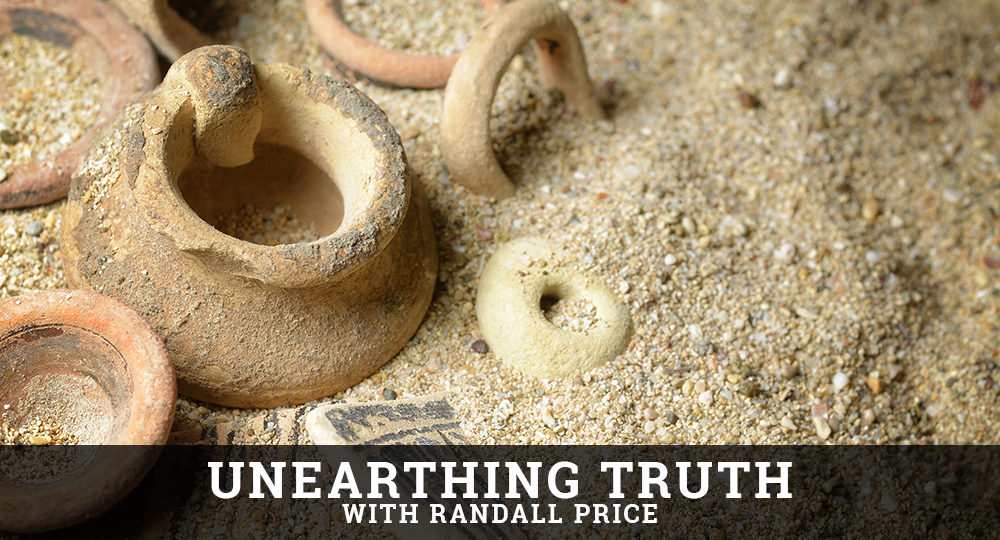God’s Home on Earth
When God exiled man from the Garden of Eden, humanity no longer had access to God’s presence. This access was not restored until the Lord prepared a people to be His covenant nation and brought them by a mighty act of deliverance to the foot of Mt. Sinai.
There God gave His Law to Moses, His mediator. The Law contained a command to construct an edifice where God could return His presence to His people: “And let them make Me a sanctuary, that I may dwell among them. According to all that I show you, that is, the pattern of the tabernacle [Hebrew, mishkan] and the pattern of all its furnishings, just so you shall make it” (Ex. 25:8–9).
The word mishkan (dwelling place) comes from the verb shakan, “dwell,” in verse 8. The idea of God dwelling on Earth with His people was used to describe the incarnation, when “the Word became flesh and dwelt among us” (Jn. 1:14). The term dwelt is the Greek word skene, a simple transliteration of the Hebrew term shakan—which is why some translations say, “the Word . . . tabernacled among us.”
The ancient Greek translation of Exodus 25:8 adds the phrase and I will be seen among you, emphasizing God’s visible presence in the Shekinah Glory, the very idea expressed in John 1:14.
The Tabernacle was to be a holy place, a “sanctuary” (Hebrew, mikdash; Ex. 25:8), for the presence of God. This use of the Hebrew Scripture in the New Testament affirms for us that God’s temporary dwelling in an earthly tent was to find fulfillment in a permanent dwelling in that “Holy One,” the Messiah (Lk. 1:35), “For in Him dwells all the fullness of the Godhead bodily” (Col. 2:9).
We sometimes forget God’s revelation on Mt. Sinai included plans for an earthly meeting place (Ex. 25:40). In Exodus 25:9, the Hebrew term tabnit (pattern, model) implies Moses received the blueprint for the Tabernacle’s architecture and furnishings. The term may also indicate Moses saw a real building in heaven where God’s presence dwells.
The apostle John saw a similar structure: “Then the temple of God was opened in heaven” (Rev. 11:19). According to the author of Hebrews, some things on Earth are copies of things in heaven (Heb. 9:11, 23–24). It appears that King David had a similar revelation of this heavenly model when he gave his son Solomon the instructions for building the first Temple (1 Chr. 28:11–19).
The Tabernacle on Earth was a prefabricated structure of wood covered with gold. Its posts rested on silver sockets. Moses’ construction engineers were Bezalel, Aholiab, and others (Ex. 36:1–4), who likely obtained their skills in Egypt. Consequently, archaeological discoveries found in Egypt may parallel the Tabernacle.
Professor and archaeologist Alan Millard has noted, “Egypt’s craftsmen had been making prefabricated portable pavilions and shrines for many centuries. One lay in the tomb of a queen from the time of its burial, about 2500 BC, until its excavation in 1925. A gold-plated wooden frame provided a curtained shelter for the queen on her journeys.”1
These Egyptian examples roughly parallel the Tabernacle in form and are from the same period (Egyptian New Kingdom, c. 1567–1320 BC). As such, they provide us with a witness from the archaeological record to the historical existence of this central sanctuary that is so much a part of God’s testimony of His salvation and our Savior throughout His Word.
ENDNOTE
- J. Randall Price and H. Wayne House, Zondervan Handbook of Biblical Archaeology (Grand Rapids, MI: HarperCollins, 2017), books.google.com (tinyurl.com/ZONDV45).








